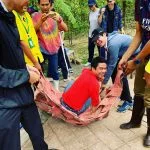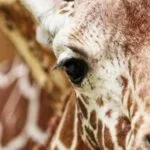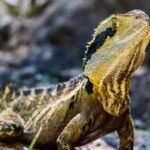The Power of Connection: Building a Strong Animal Welfare Programme
Guest Blogger, Elly Neumann has over 23 years of zoo experience, and is currently coordinating welfare, training, and enrichment at the Jerusalem Zoo. Previously, Elly worked as a senior keeper and trainer at Taronga Zoo in Australia, where she also taught animal care courses. Elly has been involved in various professional organisations, promoting animal training and welfare standards. Her mission is to continue fostering a supportive environment for zookeepers to learn and grow, contributing to the overall well-being of animals under human care. This blog offers practical insights for implementing effective strategies to create positive and compassionate environments for animals and their care staff.
Working with animals, we continuously strive to build relationships and trust with them, which helps deepen our understanding and care for the animals in our charge. But what about our relationships with each other? When our peers reach out, what compels us to answer the call? How do we respond when the welfare of animals depends not just on individual effort, but on our collective commitment and support for one another?”
The role of wild animal facilities such as zoos, aquariums and their keeping staff, has evolved significantly. Today, modern progressive zoos, aquariums, rescue centres and sanctuaries prioritise positive animal welfare, adopting a proactive approach to care and husbandry, and operate in a dynamic environment with access to global resources. This evolution means that we are now managing many interconnected pieces, all of which contribute to the bigger picture.
Building a welfare program is like assembling a complex puzzle. When the right pieces fall into place, everything comes together beautifully. But when a piece is missing or misplaced, it can be difficult to see the full picture.
This analogy struck me as I was working on a 1,000-piece animal-themed puzzle that was gifted to me. As I sorted through the pieces, it dawned on me that building a welfare program is quite similar to doing a puzzle:
- You’ll only truly grasp what needs to be done once you’re in the midst of the process.
- Each step of the process reveals itself at the right moment, and you address it as it arises.
- Just when you think a piece is in the right place, it might need to be shifted or rearranged to accommodate other parts of the process.
- If something doesn’t fit, make adjustments so you can keep building on what you have

Finding the piece that fits…
Building and running a welfare program should feel as good as solving a large puzzle, where every piece you place brings you one step closer to completing the bigger picture
This analogy brings us to some essential questions: If we understand what welfare is and recognize its importance in zoos, then what does a strong welfare program and culture truly look like within our facility? And where do we begin when it seems like there are countless pieces to put together?
What are some of the key factors that I believe are essential when trying to build a culture of welfare within your facility? Let’s explore these “pieces” and how they come together to form a robust welfare program.
Communication and a Common understanding
Effective communication with animals involves understanding their behaviours, natural history, and what it takes to meet their needs. Similarly, clear communication and a shared understanding are just as vital among team members, ensuring everyone in your facility aligns with a unified vision of what welfare truly means.
We once made a video at our zoo where we asked visitors what they thought “animal welfare” meant. As you might expect, everyone had a different answer. The kids, in particular, spent most of their time either looking at each other for help or giggling as they talked about Panda TikTok videos and Tigers on Netflix. It made for a cute and funny video, but what really stood out was that no two answers were the same. It makes you wonder—have you ever asked the staff at your facility what they think welfare is? Do their answers align with yours?
In an organisation working toward a common welfare goal, it’s important to minimise this kind of variation. We should all aim to be on the same page. One of the key goals of a unified program is to ensure that everyone shares a common understanding of animal welfare and the zoo’s welfare objectives.
This alignment allows everyone to be working towards a common goal. However, achieving this common understanding is not without challenges. How do you get everyone in your institution to truly understand and prioritise welfare? We know from human behaviour change that education alone is not enough. We must find ways to engage and motivate our coworkers so that they see welfare as a priority. Making them a part of the journey towards understanding is integral to this.
Building a culture among staff that is grounded in the institution’s values and welfare vision is one of the first challenges in establishing a strong welfare program. How do we ensure that we all speak the same “welfare language”?
When developing our zoo’s welfare program, we began by defining our Welfare Vision, Mission, and Commitment. This gave us a foundation to articulate our program’s goals and communicate our organisational welfare objectives clearly. This common goal is what guides our efforts, and yes, we’re still on this journey—constantly working to help staff focus on what will build our welfare goals and encouraging them to always strive for higher standards. After all, we don’t call this a journey for nothing.
Engagement across the board
Creating the right natural environment is crucial for an animal’s well-being. It must be safe, enriching, and suited to their needs. Similarly, a positive work environment and culture are essential for teams. An environment that fosters collaboration, respect, and shared goals lays the foundation for a strong welfare program.

Creating engagement across the board.
It’s important to recognize that promoting positive animal welfare is a responsibility shared by everyone in the organisation—not just the zookeepers. While we often focus on those who directly care for the animals, the truth is that improving an institutional welfare program requires the engagement of all staff. From keepers to managers, cleaners, office staff, educators, and even those selling tickets at the front gate—every role contributes to the welfare journey.
Moreover, involving our visitors in this culture of care can be incredibly powerful. Imagine the impact if they, too, understood and supported our welfare goals. By fostering a shared commitment to animal welfare across all levels, we create a culture that truly prioritises and enhances the well-being of the animals in our care.
Develop a program that works for your facility, is easy-to-implement and sustainable
Creating a welfare program tailored to your specific facility is key to ensuring both effectiveness and sustainability. Animal care often requires adaptability—responding to changes in behaviour, health, or environment to ensure optimal welfare. Similarly, adaptability is crucial in human collaboration. Teams must be flexible and open to new ideas, adjusting to challenges and changes to maintain a robust welfare program.
To develop a program that fits your facility, focus on processes and outcomes that everyone can actively contribute to. This collaborative approach fosters ownership and commitment among staff, making the program more resilient and sustainable over time. It’s essential to consider how the program can evolve—how it can continuously improve or even change as needed.
Utilise your organisation’s strengths and capabilities to build processes and procedures aimed at continuous improvement in welfare. By doing so, you create a foundation for ongoing growth, ensuring that the welfare program not only meets current needs but also adapts to future challenges.
Collaboration is key
Trust is the foundation of any successful relationship with animals. Through consistent, positive interactions, we build trust that allows animals to work with us, not for us. Similarly, trust and reliability are crucial in human relationships within a team. Just as animals respond to consistent care, teams thrive when members can rely on each other to share information, resources, and support.
Collaboration and shared resources play a significant role in enhancing animal welfare. Knowledge sharing—whether through research, best practices, or new insights—leads to better care and welfare for animals. Pooling resources, whether educational, or material, strengthens collaboration and bolsters the effectiveness of welfare programs. Numerous success stories demonstrate that when zoos and animal organisations work together, the impact on animal welfare can be profound. By sharing resources such as training plans, enrichment ideas, welfare assessment templates or even internal husbandry processes and procedures we can create more robust and sustainable welfare programs that benefit all involved.
Knowing what foundational resources exist can also be helpful. Wild welfare is a great example of where to start when you “don’t know where to start”. The Wild Welfare e-learning programme can not only be accessible to everyone in your facility, but is a great holistic approach to being able to understand welfare so that you can care about welfare. When someone asks for examples of welfare resources, even sharing a basic outline, can be instrumental in helping them develop their programme. Building on what others have developed allows for added thought and specificity, which can be invaluable. Conversely, when asking for help, being as specific as possible ensures that others can easily identify if they have something similar already developed. This targeted approach to collaboration not only saves time but also enhances the quality of the welfare programs we create together.
Building a Network for Animal Welfare
In the animal kingdom, many species rely on alliances for survival- animal groups who work collectively to achieve what they couldn’t on their own. Similarly, in the world of animal welfare, collaboration and networking are essential for success.
Creating alliances among zookeepers, zoos and various organisations strengthens the collective ability to enhance animal welfare. Utilising online platforms, conferences, workshops and even that great zookeeping journal “Facebook”, we can facilitate ongoing dialogue and learning across institutions.
There are many organisations that align with support needed- these may be accrediting organisations such as EAZA, AZA, ZAA or other regional organisations that can give support and resources. Or these may be international membership based organisations such as ABMA, IAATE, ICZ or IMATA whose members can provide support and advice as needed.
By building a strong network, we can amplify our efforts and create a more unified approach to animal welfare, benefiting animals and the institutions dedicated to their care.
There are numerous opportunities within various organisations to build a strong network… and often, you don’t have to limit yourself to just one!
Mentoring: Guiding and Growing Through Relationships
In nature, many animals pass down knowledge through mentoring relationships. These natural mentorships ensure that essential knowledge and behaviours are preserved across generations, fostering the strength and survival of the group. Similarly, in the world of animal welfare, mentoring plays a crucial role in developing a strong welfare culture.
By guiding and supporting less experienced staff, mentors pass on vital knowledge, foster new leaders, and ensure the continuity of high standards of care. Mentoring helps build a network of professionals connected by shared goals and values, benefiting both the mentor and mentee. I’ve seen countless people seek out mentors and others give back as mentees, making mentorship feel like an essential part of our roles.
In the ever-evolving world of zoos and zookeeping, the significance of building strong relationships and sharing resources cannot be overstated. Just as we dedicate ourselves to the bonds we form with the animals in our care, we must also nurture the connections we share with our peers. The success of a welfare program doesn’t rely on individual efforts alone; it thrives on our collective commitment and the strength of our collaboration.
Building a welfare program is like assembling a complex puzzle. Each piece—be it communication, collaboration, involvement, or mentoring—contributes to the larger picture. As we work together, we cultivate a culture that prioritises animal welfare across all levels of our institutions. From the keepers who interact daily with the animals to the team members behind the scenes, every role is vital to this mission.
By fostering a culture of shared knowledge, pooling resources, and building strong networks, we can amplify our impact and ensure our welfare programs are not only effective but enduring. Mentorship and collaboration enable us to grow as professionals, ensuring that the high standards of care we set today will continue to be upheld in the future.
It’s not about how quickly we achieve our goals, but about taking it one piece at a time, moving steadily forward until we reach the end.
Ultimately, the power of connection—both human and animal—lies at the heart of our efforts. By working together with a shared vision, we can build welfare programs that meet the needs of the animals in our care and set new benchmarks for excellence. As we continue this journey, let’s remember that each step we take, each relationship we strengthen, and each resource we share brings us closer to our ultimate goal: a future where the well-being of all animals is prioritised, respected, and continually enhanced.
Elly Neumann (2024)
A guest blog in collaboration with Wild Welfare
Note to editors:
The views, opinions and positions expressed by guest bloggers are theirs alone, and do not necessarily reflect the opinions of Wild Welfare or any employee thereof. Wild Welfare is not responsible for the accuracy of any of the information supplied by the guest bloggers. We accept no liability for any errors, omissions or representations. The copyright of this content (including images) belongs to the author and any liability with regard to infringement of intellectual property rights remains with them.







